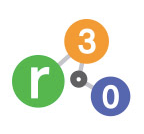From Shareholders to Stakeholders — to Rightsholders: Why the Shift?
By Ralph Thurm & Bill Baue
This is part 7 of the Reporting 3.0 series that highlights the ‘burning questions’ of Boards and Sustainability Professionals why we need Reporting 3.0 and what it aims to deliver with its Blueprints on Reporting, Accounting, Data and Integral Business Model Design.
What’s the issue?
Shareholder primacy, focused as it is on short-term profit and return maximization above all else, drives monocapitalism. So, the shift to multicapitalism similarly entails a broader focus — on system value creation– to address the interests of a wider spectrum of stakeholders. We at Reporting 3.0 believe this wider spectrum actually transcends the notion of stakeholders to encompass rightsholders– namely, we all have a right to wellbeing that’s free from harm by corporate activities — or, ideally holistically enhanced by company influence.
Shareholders have long held“primacy” in company decision-making. A shift started about a half-century ago, when Stanford Research Institute (now SRI International) coined the term “stakeholder” to describe a broader set of constituencies that influence enterprises’ decisions and actions. In his seminal 1984 book, the “godfather” of Stakeholder Theory Ed Freeman defined stakeholders as “any group or individual who can affect or be affected by the achievement of an organization’s objectives.”
And over that last several decades, these stakeholders have exerted an increasing voice in setting corporate agendas — precisely because these stakeholders have a rightful claim to a world where their wellbeing is at least respected, and certainly not systemically degraded (as is now often the case). We at Reporting 3.0 believe this calls for transforming the language behind this logic one step further. We believe that humanity’s core rightto wellbeing establishes a commensurate accountability for company activities that impact on this wellbeing, and hence we propose the concept of rightsholders.
We can’t conceive of a reasonable case for a license to harm, only a license to help (or perhaps a do-no-harm license).
Underpinning this concept is the doctrine of Context-Based Sustainability (CBS), which establishes companies’ duties and obligations to support stakeholder wellbeing. Company activities have direct impacts on people, as well as indirect impacts on the vital capital resources (water, climate regulation, human labor, etc…) they rely on for their wellbeing. So, companies have a responsibility to manage their impacts on these capitals within their carrying capacities — in order to retain sufficient resources to support their rightsholders’ wellbeing. In other words, managing resource stocks within their natural cycles, such that they continue to produce necessary flows.
Why it’s important?
The right-to-wellbeing represents a rapidly emerging risk for companies that neglect to take a rightsholder perspective. Take, for example, the recent lawsuits by the Philippines Government and the City of New York against companies for climate change impacts on human rights. These companies are being held accountable for upholding citizens’ rights to a liveable climate.
On the flip side, the opportunities of a rightsholder approach are also emerging more clearly. Take, for example, the move toward a circular economy, which we believe is a necessary aspect of a Green, Inclusive and Open Economy. In such an economy, there are no “losers” in the value cycle, as it is today when negative impact created within a closed loop inherently impacts the whole cycle.
Reporting 3.0 collaborator Alexander Lemille calls for a circular economy that manages the cycles of stocks and flows of vital capital resources not only in the biosphere and technosphere (as displayed in the Ellen MacArthur Foundation Circular Economy System “Butterfly” Diagram), but also in the circular humansphere.
We believe this perspective supports a rightsholder approach that isn’t based on just reducing risk, but offering a broader spectrum of opportunities.
How can you tackle it?
The Reporting 3.0 Integral Materiality Process (introduced in Part 6 of this series) calls for taking a rightsholder-based approach by:
- Identifying legal duties and ethical obligations your company owes to your rightsholders — which secures your right to exist and indeed your right to grow;
- In addition to identifying these responsibilities (from the first bullet above) on your own, you can also engage with the rightsholders in your value cycles to confirm alignment between perspectives, or differences that point to latent risk;
- Differentiating between direct and indirect impacts on rightsholders (while direct impacts may be easier to identify, indirect impacts on vital capital resources that rightsholders rely on for their wellbeing can create bigger risks);
- Using the r3.0 Strategy Continuum, you can map the interlinkages between micro / meso / macro impact areas to clarify individual, collective, and systemic rights that your business model impacts.
What will you have achieved?
A rightsholders approach insulates your company from risks associated with the harms your business model may cause to your stakeholders, inadvertently or otherwise. It also generates opportunity to prosper from tapping into the system value creation of the circular humansphere. Ultimately, taking a rightsholder-based approach continues the journey from a shareholder primacy orientation that may rely on a license-to-harm, through a stakeholder primacy orientation that advances a do-no-harm license, to a rightsholder alignment that progresses a license-to-help model.
What question will we discuss next time?
What are thresholds & allocations, and why are they necessary for sustainable system value creation? Please find part 8 here.
Please add your feedback, the authors Ralph Thurm and Bill Baue of Reporting 3.0 will look at all responses. Don’t forget to ‘wave’ if the above resonated with you ;-).
[Context of this series: The sum of these articles form the basis of an Implementation Guide that summarizes the total value of Reporting 3.0 in implementing a future-ready sustainability strategy and disclosure approach, in line with the idea of a Green, Inclusive and Open Economy. By posting these articles here Reporting 3.0 seeks feedback in the writing process of the final document, to be released as Blueprint 5 at the 5th International Reporting 3.0 Conference in Amsterdam, The Netherlands, on June 12/13, hosted by KPMG, see www.2018.reporting.org]
